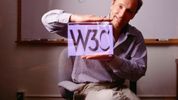The balanced score card was, and probably still is, across Hilton Hotels with customer input scoring vital KPIs e.g. quality of shower and cleanliness of bedrooms.
This article highlights how sensors & IoT could not only ensure the temperature is right in all areas of a hotel but also cut running costs. But IoT is not a solution by itself. Combined by other innovations it is the driver of competitive advantage. For example;-
Add the ability to add "self-service " quality control by guests and the army of chambermaids and cleaners would increase service levels and reduce costs. Send a link to each guest to take photos, video of what they liked and what they disliked, and analyse. Give the housekeeping staff the same app with before and after quality check. Everything time stamped with real-time analytics.
Just needs a platform to enable that like the 360Globalnet asset management platform.
This turns business models upside down for the good of customers and the business. Combines the IoT with end-to-end business process management. Gives organisations to platform to deliver more for less cost.
Take a luxury hotel that has major heating, ventilating and air conditioning (HVAC) expenses. It can cut costs by regulating the air conditioning and heating based on the number of people in any given part of the hotel — data that sensors can easily provide. In one IoT pilot, it was found that making HVAC systems more efficient that way could save a hotel around $60,000 a year in one location alone. “Hotels are usually part of a large chain and have multiple properties. Even a 1% reduction in their air conditioning and heating costs across multiple locations can result in substantial savings,” says Jasti.






